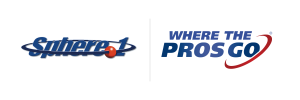As we work to bring our members the best marketing tools and information, we will be featuring new and useful articles from our partners all through 2023. our first article is from our friends at Keson who share their story of how they rebranded back in 2010 and the lessons they learned.
Getting to “Know Thyself”
A process for finding out what your company is in the eyes of others
I have a friend who, when confronted by any of life’s simple obstacles, often uses the self-mocking line: “Don’t they know who I think I am?!”. It is a such a brilliant juxtaposition of hubris and self-awareness in a single, simple question. I think “I am the grand-high mucky muck, worthy of only fine and fair things. What observer could possibly fail to see and understand this instantly?!” Outrageous, I know. I think this simple question gets to the heart of the tricky issue of brand identity. We want to be seen with these attributes, and so we assume we are. Well, if you are anything like me or my friend, what we “think we are” is not exactly how others see us.
In 2010 Keson tackled a rebranding initiative. In 2009 our product offering looked like this:

In 2010 we changed that and today it looks like this:

To make this shift, we underwent an arduous process of self-discovery, then an even more difficult process of transformation. We came to find out that what we thought about ourselves was NOT EXACTLY what our customers thought of us. It was very enlightening. I was part of that process, and below I will relate one of the exercises we did. I believe any company can do it to improve its knowledge of itself. By using this process, you can:
- Gain a more complete or accurate understanding of your brand
- Find opportunities worth pursuing
- Get tips that make you (and others) valuable to your customers
- Get insights on what will make you more money
We had an agency take us through the interview process in preparation for our transformation. Since our rebranding, I have used this same process for Keson and for others.
The process is simple. It is a series of qualitative interviews with important people within your business sphere. The goal is to listen and record what is said. It is not to correct or change anyone’s mind. This is “seek to understand” NOT “to be understood.” If you are not comfortable asking others to share, I suggest you employ someone who is. If you do what is suggested, I suspect you can get about $10,000-30,000 of market research for around $2,000. (It’s really about half that, because you get to eat as well!). Please resist the urge to correct or to change the minds of your guests. You are here to listen and learn.
About 20 lunches @ $100
Invite one or two guests per lunch. Consider 1-3 different lunches with different people in each organization (especially with the customers).
3-5 Lunches with your biggest customers.
3-5 Lunches with your oldest/newest customers.
3-5 Lunches with your smartest business network contacts.
1-3 Lunches with your banker/accountant/anyone else who might know your business well (and knows business).
1-3 Lunches with your longest employees.
Bring a notes taker. Ask your guest if you can record it.
I suggest a salesperson, marketing person, or someone you trust and who takes good notes.
They can order a lunch, but THEY ARE NOT THERE TO EAT! THEY ARE THERE TO TAKE NOTES!! Let them show up and eat an hour early and be ready to take notes when you arrive.
These are great questions to ask during those lunches:
About their business
- What is the one thing none of your vendors do that you wish they would?
- What is driving you nuts/what keeps you up at night?
- What is most important to you?
- What is most valuable to you? (This is not always the same thing as #3 important. If you can, do what’s important first.)
- Can you tell me about the favorite service experience you have had, whether in business or as a consumer?
Optional: What makes you successful? I love asking this question. I am often surprised by the answers.
About your interactions with them
- In 5 (or fewer words), how would you define our brand?
- What do you like about doing business with us? Examples, please.
- What are we doing that makes your life easier?
- Can you give me an example of what we are doing that makes your life easier?
- What makes that valuable to you?
- What would you offer that we don’t/what do you wish we offered?
- What is the most impactful thing we can do for you?
- What do your customers think of us? Can we talk to a few of them?
About Competition/other suppliers
- Who is your number one supplier/distributor?
- What are they doing that makes them your #1?
- Ask for examples.
- Who does it better than we do? What are they doing?
- In Marketing, in Sales, in Delivery, in Service, etc.
- Who is my biggest competitor?
- What are they doing that makes them your #1?
- Ask for examples and specifics
There are about 15 questions above. If you can ask them all 15 of everyone that’s great, but it’s not critical. I have been at lunches that have ended in 45 minutes and some that have gone 120+. If you are not recording, review and record the answers immediately with your teammate. Write down your biggest 2-5 things learned from each meeting at the time of the meeting.
There will be fuel for your marketing initiatives and service offerings in your notes. You will see similarities and commonalities. You will see confirmation of messages you hope are getting through AND you will see that some of your efforts are not getting through, regardless of how much effort you have put into them. It’s okay. What you are after is data. Don’t judge yourself too harshly. We all need a reality check.
Using the Data
I suggest sharing the data with your trusted executives/decision makers. Their insights on how to use what you have learned will be helpful as well. Sales is going to see things differently than Operations. Customer Service will notice things that Accounting will not, and vis versa. Be mindful of confirmation bias. I have a tendency to hear only those ideas that align with what I already believe and use them as confirmation.
Making changes
- Fix what you can. Honestly evaluate if you are the best person (or have the best people) to correct any issues you find.
- Get help where you must. Find someone who has done what you’re trying to do. Ask them how they got there.
- To help prioritize, you can use the Round Robin, What would Ike do?, and the Figure of Merit (FOM) tools recommended in past articles to help you determine what to take on.
- Rank the items you want to tackle as “important” and “urgent”. I use 0-5, 5 is the highest.
- Simple and fast are good. Essential items (ones that are both important and urgent) rank higher than just important items.
- If you can knock out some simple ones quickly, that will make you feel like all those lunches were worth it.

